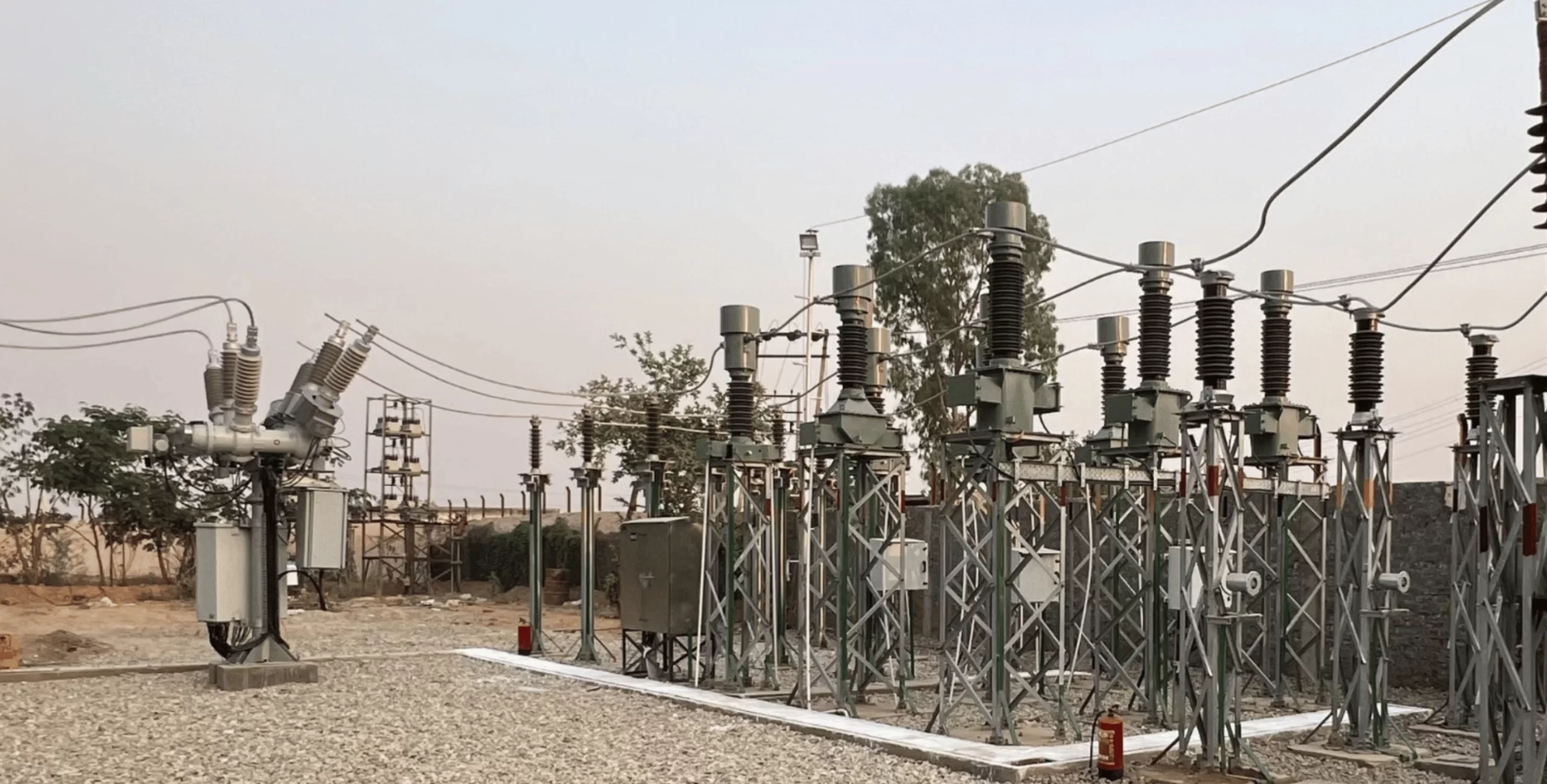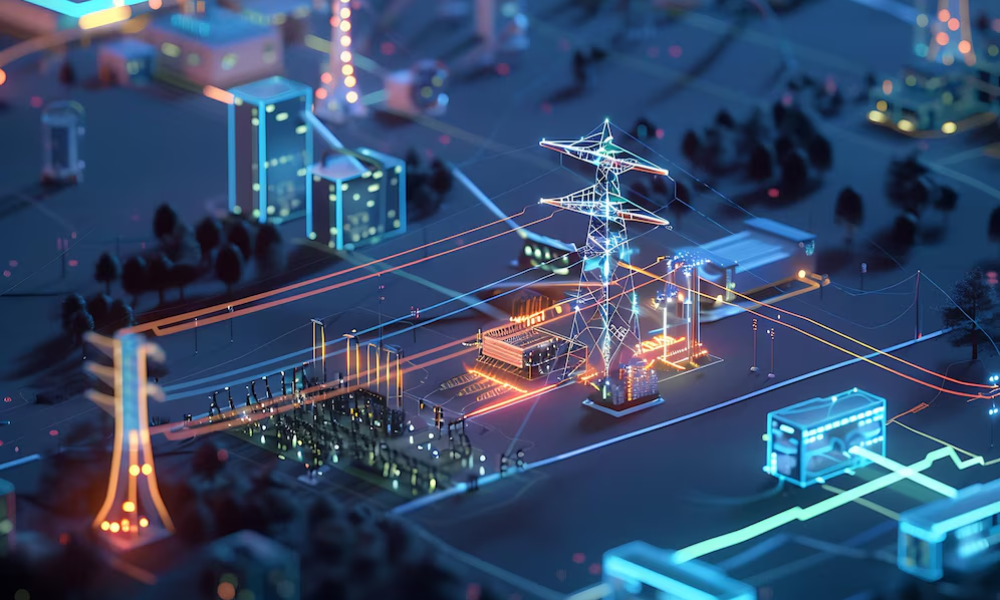India’s Solar Surge: A Quick Look
India is rapidly advancing towards one of the world’s most ambitious clean energy goals. With a 2030 target of 500 GW of non-fossil fuel capacity, of which 280 GW will be from solar, the solar capacity in the country is increasing at a remarkable rate. From mega solar parks in Rajasthan and Gujarat to solar panels on rooftops of urban houses, the sun is emerging as a top source of India’s energy future.
This surge in utility-scale solar facilities and the growing deployment of rooftop solar systems is a sustainability victory. It introduces a new array of grid infrastructure challenges Indian solar developers have to deal with, though. More solar power coming into the system puts a strain on India’s electrical network, which still has a lot of thinking around centralized power sources.
With the increased demand for grid-connected solar projects, the load on transmission and distribution (T&D) networks is only increasing. In order to transport power in an efficient manner from where it’s produced (usually in far-flung solar parks) to where it’s consumed (in cities and industry), we require a more robust, more intelligent grid.
Let’s get an understanding of the major issues India’s traditional power grid is confronting, and how smart energy grids can address them.
Major Challenges in India’s Power Grid
1. Insufficient Transmission Lines
India’s electrical grid hasn’t grown as fast as the country’s renewable capacity. Several solar-abundant states, particularly in the west and south, produce more electricity than their regional grid can absorb. However, since there is limited interstate transmission infrastructure, much of that clean energy is wasted or underutilized.
At times, solar power plants are also ready to generate power but cannot evacuate power because there are not enough transmission lines. This results in curtailment, with clean power being simply switched off.
To help India’s solar push, we must construct transmission corridors between solar zones and load centres (busy areas like cities, industries, and data centres). Otherwise, solar will be underutilised.
This remains one of the most pressing grid infrastructure challenges India solar developers are currently facing.

2. Overburden on the Grid
As the sun shines and generates power during the day, particularly in sunny months, the power grid sees huge supply fluctuations. At sunset and peak demand in the evening hours, the grid suddenly has to flip back to traditional sources such as coal or hydro.
This intermittent up-and-down movement of energy puts pressure on the traditional power grids. They are not equipped to deal with such variable and decentralised sources.
On top of this, distribution companies (DISCOMs) already face financial strain, ageing infrastructure, and technical losses. Adding more solar without strengthening the grid only worsens these problems.
3. Solar Power is Unreliable
Solar power generation is highly dependent on weather. If a storm blows in early, or there is a sudden downpour, then solar production may go to zero rapidly. This complicates decisions for grid managers since a detailed balance of supply and demand must happen in real-time.
Transmission grids have been designed for predictable and central energy sources. However, renewable energy adds an unpredictable generation resource and requires new systems to account for unpredictability.
This is part of the story about the transition from traditional power grids to smart power grids.
4. Slow Project Execution
Even as the government declares new transmission projects, slowness in land acquisition, clearances, and fund release delays implementation. Solar power plants, in most instances, get constructed sooner than the transmission lines, causing a bottleneck in the delivery of power.
These delays not only impact energy availability but also deter private investment in solar infrastructure.

How to Fix It
1. Construct Additional Transmission Lines
To be able to fully utilise solar energy, India has to speed up the construction of high-capacity transmission lines, particularly from renewable energy zones (REZs) to centres of demand.
Projects such as the Green Energy Corridor are in the right direction. They require quicker rollout and enhanced coordination between state and central agencies.
Private sector companies in grid infrastructure, like Hartek, are capable of contributing to the development and maintenance of these essential transmission systems efficiently.
2. Implement Smart grid technology
Smart grids represent the future of India’s electricity system. Smart grid networks utilize digital communications and automated devices to monitor, predict, and respond to energy distribution and consumption in real-time. It is distinct from traditional power grids in that smart grids can adjust more easily to variable inputs such as solar and wind-based generation while reducing outages and power loss.
However, the transition to advanced energy grids in India faces several challenges, including high implementation costs, lack of awareness, and limited technical expertise. Despite these hurdles, the long-term benefits, such as improved grid stability, reduced energy loss, and more accurate demand forecasting, make the investment worthwhile.
Here’s how smart grid technology assists:
- Real-time monitoring of solar input and grid health
- Automation of load balancing and demand response
- Remote control of substations and feeders
- Integration of energy storage systems such as batteries
These systems enable operators to balance supply and demand more dynamically, and hence smart energy grids are best suited for a solar-dominated future.
3. Accelerate Approvals
Project clearances delayed remain one of the largest barriers to solar expansion and grid infrastructure development.
To rectify this, we require:
- Single-window clearances for solar and transmission projects
- Faster environmental and land approvals
- Enhanced coordination between ministries, DISCOMs, and private developers
Faster approvals mean fewer delays, lower costs, and more investor confidence.
The Way Forward: A Smarter, Stronger Grid for a Solar Future
India’s energy future depends on how well it can balance growth in solar with modernisation of its power grid.
India has already made massive progress in solar installations. But now it’s time to focus equally on electrical grid infrastructure, especially in terms of capacity, technology, and speed of execution.
By investing in smart power grid solutions, increasing transmission capacity, and eliminating bottlenecks, India can make sure that each unit of clean solar energy produced finds its way to the people who need it.
Hartek, being a major contributor to India’s power sector, continues to lead this shift. From constructing smart grid networks to implementing high-quality substation and transmission projects, we continue to fuel India’s grid infrastructure.
Final Thoughts
Solar power is no longer the future, it’s now. But without proper grid infrastructure, even the best solar aspirations can come up short.
To actually realize the sun’s potential, India needs to overcome the grid infrastructure challenges India solar progress. That will mean improving the grid, adopting smart technologies, and eliminating unnecessary project delays.
The sun shines brightly on India’s energy aspirations. It’s time our power grid steps up.
FAQs:-
1. What are the major grid infrastructure challenges India solar developers face?
Key challenges include insufficient transmission lines, overburdened grids, solar unpredictability, and slow project execution.
2. Why is India’s current power grid not ready for large-scale solar adoption?
India’s grid was built for centralized energy sources and struggles with the variability and volume of solar power integration.
3. How can smart grid technology help India’s solar power infrastructure?
Smart grids use real-time monitoring, automation, and storage integration to balance solar input and grid demands effectively.
4. What is solar curtailment and why does it happen in India?
Solar curtailment occurs when solar power can’t be transmitted due to insufficient grid infrastructure, causing clean energy wastage.
5. How can India fix grid infrastructure to support solar growth?
India needs to accelerate transmission line development, adopt smart grid systems, and streamline project approvals to support solar energy.



